We’ve all been there. Hand planing a thin piece of wood—a workholding nightmare—you find that your planing stop is too tall. Even if it isn’t, the second the blade engages the piece, it lifts it up.
No problem; this is why you have a tail vise on your bench, right? WRONG! When you tighten the tail vise it bows the piece. I’ve heard the solution many times: Clamp the piece to your bench at the end and plane away from the clamp. Then, flip the workpiece and plane the section that was under the clamp. Sounds like a good idea, but we all know that the gods of grain direction laugh at you the second you think about it.
What to do?
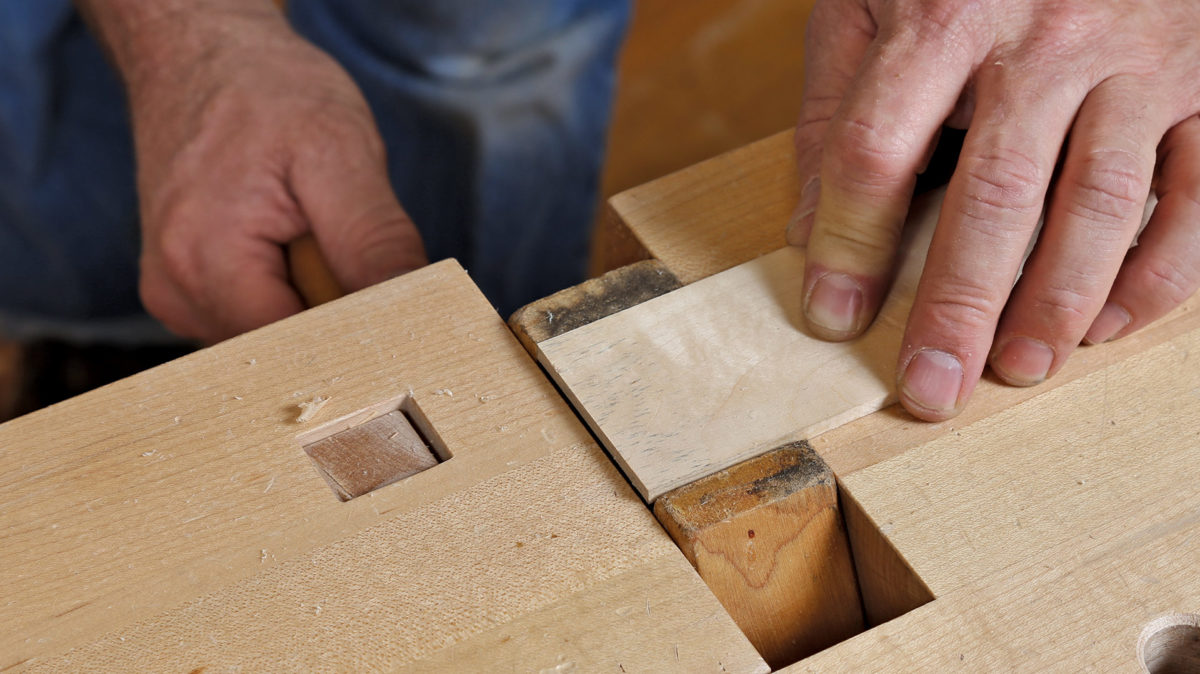
In Chris Gochnour’s upcoming article “Extra Help for Holding Work,” he demonstrates an ingenious work-around for this problem. Chris clamps a wooden hand screw in his tail vise, then clamps the board in the hand screw. The hand screw holds the back of the workpiece securely from the sides, making it possible to plane away from the clamp, without the clamp interfering. Pro tip: If you plane down the thickness of one of the clamp jaws, it will make it easier to adjust it once it’s held in the tail vise.
For more awesome workholding tips like this, check out Chris’s article coming soon in issue #266 of Fine Woodworking.
More on FineWoodworking.com:
- Garrett Hack: Holding Your Work – Simple and efficient solutions for keeping your work steady
- Mike Pekovich’s Go-To Work Holding Jigs
- Using Hand Screws – Time-honored tool is still first choice for a variety of shop tasks





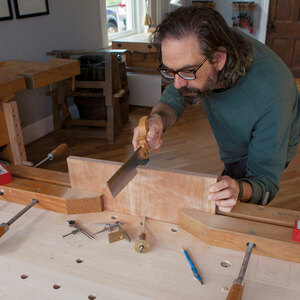
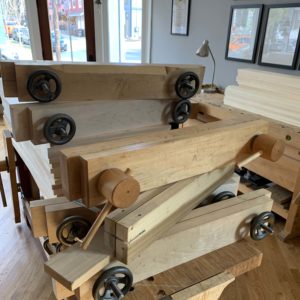






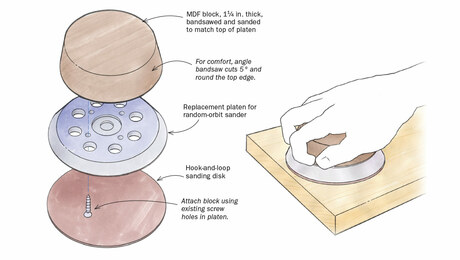
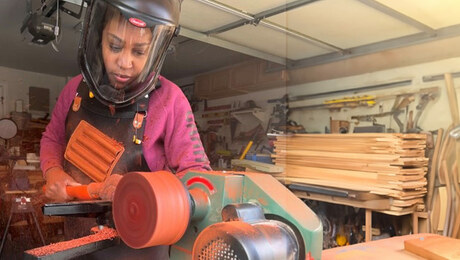








Comments
Pro tip: If you plane down the thickness of one of the clamp jaws, it will make it easier to adjust it once it’s held in the tail vise.
I'm guessing that's so the one side of the jaw can pivot to set the board flat
I don't think that's it, chipmaker2, if I'm understanding what you're saying. Planing down just one arm of the hand screw allows it the freedom to move and clamp down on the thin stock, while the unplaned arm is held securely in the tailvise.
Very clever. Something I will try, as I struggle with other methods of handplaning thin stock.
Several times while trying to watch one of your videos it stops midstream & I get one of those circling arrows indicating that it's downloading. But it just keeps going, and then I get a message saying it would not download. I haven't had any such problems with other sites & videos. Just this one that seems to be using something called Brightcoat of something like that.
What's wrong with sticking the piece down on a flat surface like a piece of MDF with double sided tape"
I have an end vice on my bench, but it doesn't open at the front like the one in the video. Great tip, though if your bench suits.
The double sided tape on a flat surface works fine but you might need a stop to keep the plain from dragging the piece you're trying to plan.
I needed some dead even 1/8" X 1 1/8" strips. I didn't want problems with the tape holding so tight that I broke any of the strips trying to get them lose after I planed them and I was a little worried about the thickness of my usual double sided tape causing variation in thickness over the 30" length. So I used Scotch brand double sided cellophane tape. It's only .003" or so thick and doesn't have near the holding power of "woodworker" tape but enough to keep the strip from rising up. I clamped a block to the end of my jointer outfeed table sticking up about 3/32" for the strips to stop against, stuck the strips down on the table and checked the thickness with the depth gauge as I planed. It worked great for me.
Be Safe and have fun
Yep, agreed that "turners' tape" might be a bit too thick and variable in thickness. And double stick Scotch tape may be a bit too weak to stay stuck under the pressure of planing.
I've found the double sided tape from http://www.itape.com is a good compromise. When done planing, just gently slip a putty knife under the strip's end and GENTLY start prying it up. It'll starting giving and then pop loose w/o damaging the strip.
Log in or create an account to post a comment.
Sign up Log in